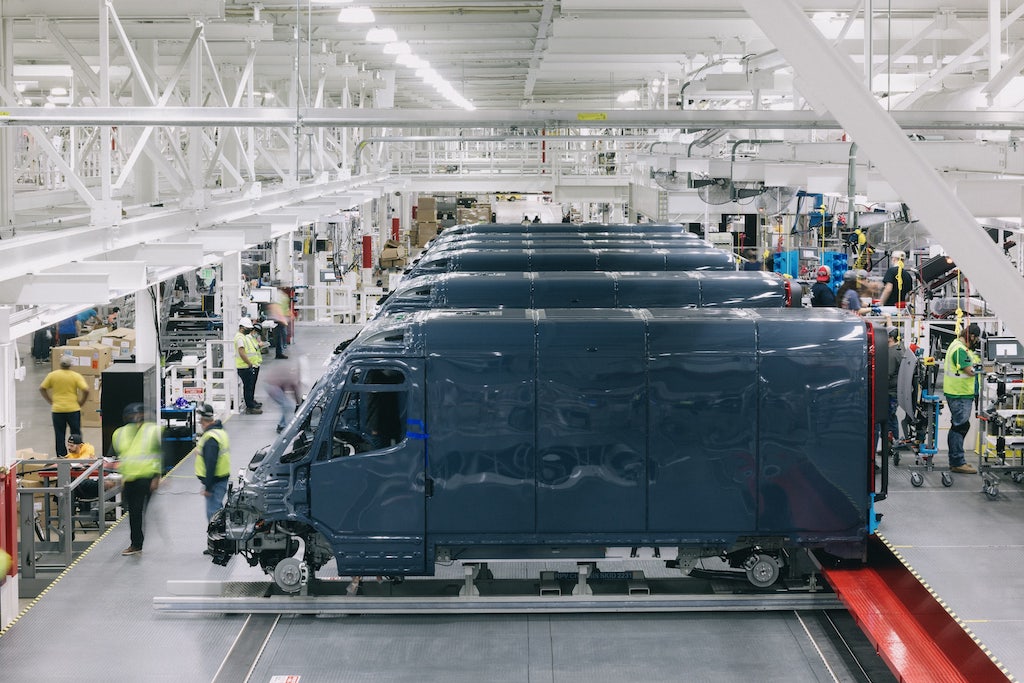The rise of manufacturing jobs in small urban areas, particularly McLean County, Illinois, has been notable since 2019, especially during the recovery from the COVID-19 pandemic. Traditionally characterized by State Farm Insurance and Illinois State University, McLean County has transformed into a manufacturing hub with the addition of thousands of jobs from Rivian, an electric vehicle manufacturer, and a new candy factory producing Ferrero products. Patrick Hoban, president of the Bloomington-Normal Economic Development Council, remarked on the rapid growth of Rivian’s workforce, which swelled from 300 employees to 8,000 in just a few years. This surge in employment reflects broader trends across various locations, where manufacturing has rebounded, and locations with lower living costs are now attracting factories, showcasing a significant shift in the types of industries emerging in these regions.
The significant rebound in manufacturing jobs occurring across the United States, particularly between 2019 and 2023, marks a rare recovery since the 1970s recession, as indicated by data from the Economic Innovation Group. By 2023, manufacturing jobs reached approximately 12.9 million, slightly exceeding pre-pandemic numbers but still far below the historical peak of 19.4 million manufacturing jobs in 1979. This post-pandemic recovery is attributed to policy initiatives from the Biden administration aimed at increasing wages and job stability through legislation like the CHIPS and Science Act and the Inflation Reduction Act. However, the path toward establishing more union jobs has been complicated by political changes, raising concerns from labor historians about the sustainability of such gains.
Emerging challenges faced by the manufacturing sector highlight the precariousness of lower-paying jobs, especially in areas reliant on immigrant labor. Professors like William Jones have pointed out potential difficulties in filling roles such as meat processing due to changes in immigration policies under a Republican administration. Reports show that growth in manufacturing jobs has predominantly occurred in smaller urban markets across states like Nevada and Alabama, while large urban centers have seen stagnation or further decline. For instance, Alabama demonstrated significant increases in automotive manufacturing jobs due to favorable labor laws, while traditional manufacturing strongholds in the Rust Belt region, like Michigan and Ohio, continued to see job losses.
Manufacturing growth in Nevada, fueled largely by electric automotive and battery production through companies like Tesla and Redwood Materials, has mirrored the trends seen in small urban areas like McLean County. Notably, Storey County has experienced a remarkable tenfold increase in jobs over 15 years. The upward trajectory of these small urban hubs stems from an intentional focus of federal policy aiming to invigorate regions that had previously been left behind, particularly those leaning Republican in their voting patterns. Election outcomes in locations like McLean County, which voted Democratic, exemplified the complex political landscape that accompanies economic strategies aimed at revitalizing local manufacturing sectors.
Despite the growth in manufacturing jobs, issues surrounding wages continue to persist. Current manufacturing positions pay an average of $34.42 per hour, which, while competitive compared to other blue-collar sectors, remains markedly lower than positions in energy or construction. The decline of union power has contributed to this wage stagnation, prompting state-level Republican administrations to resist labor movements advocating for higher wages and better workplace conditions. States like Alabama have enacted laws to deter union recognition, underscoring a potential clash between burgeoning manufacturing opportunities and labor rights advancements.
The long-term sustainability of manufacturing growth is uncertain, as observed by experts like Joseph McCartin, who noted that recent job growth without robust union support may not provide the same stability and lifestyle once associated with factory work. As changes in U.S. manufacturing continue to unfold, the interplay between political initiatives, labor policies, and local economic conditions will be crucial in determining the future of blue-collar employment and the health of these newly revitalized manufacturing regions. The transformative journey of places like McLean County, with its burgeoning electric vehicle and candy manufacturing sectors, serves as a microcosm of broader national trends affecting the future of work in America.

